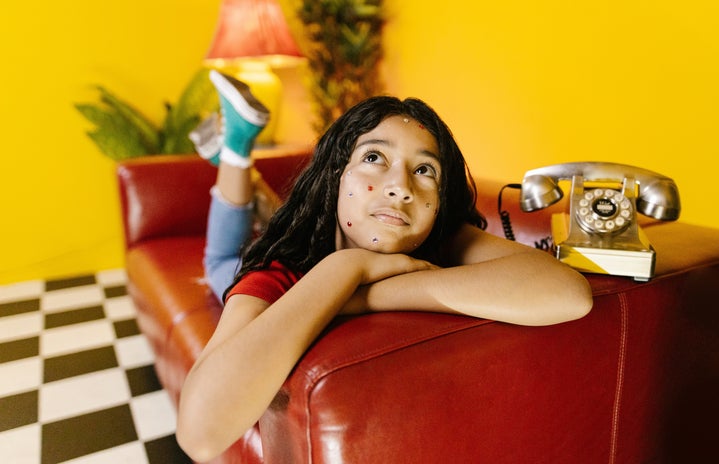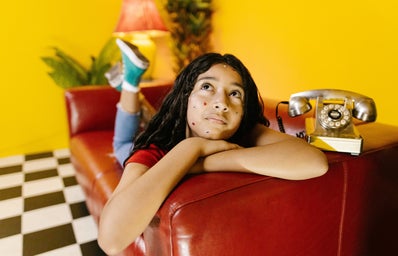(Content warning: This article contains content involving body image and eating disorders. Please proceed with caution.)
According to Fashion Magazine, Google searches for terms such as “early 2000’s style” and “Y2K inspired outfit” have increased over 20% since last year alone.
We can see this reflected in the clothes worn by college students. Increasingly, members of Gen Z have turned to Y2K fashion as inspiration for their outfit choice. A student-run Instagram account, @hotticketucsb, even documents the most intriguing or stylish outfits seen on UCSB’s campus; many of the featured fits include low-rise jeans, crop tops, and other trends we recognize from our early childhood.
On the surface, the comeback of Y2K fashion seems harmless. Personal style is simply just another way to express oneself, right? But we need to be careful in welcoming back these trends. In the early 2000’s, these style choices were symbolic of a culture that normalized fatphobia, eating disorders, and racial exclusion.
I know it sounds shocking. Many of us “Gen Z-ers” were too young to understand or even participate in these trends at the time. But looking back on that period, it’s clear that a combination of factors contributed to these problems. The trends of the 2000’s built on the 90’s “heroin chic” aesthetic, which glorified thinness to the point of emaciation. However, clothes became tighter and more revealing than they were in the previous decade, only further emphasizing the need to be thin in order to participate. These fashion developments coincided with the birth of the Internet and social media sites, many of which glorified eating disorders like anorexia.
The garments produced at this time are reflective of these toxic attitudes. YouTuber Angela Benedict describes the strange design of clothing from the 2000’s; they fit in odd ways that made hips and stomachs protrude, contributing to body image issues among the young women who purchased them. Many trendy outfits weren’t even available in plus sizes; retailers like Abercrombie and Fitch didn’t introduce plus-size clothing lines until 2014.
It doesn’t come as a shock, then, that eating disorders became increasingly common during the 2000’s. From 1999 to 2009, hospitalizations for women with eating disorders increased by 21%. But, these disorders were accepted and even glamorized at the time. Actress Mary-Kate Olsen appeared on four major fashion magazine covers the same year that she was hospitalized for an undisclosed eating disorder. Perhaps model Kate Moss best summed up the Y2K attitude towards food and fashion when she declared, “Nothing tastes as good as skinny feels” in 2009.
This notion of fatphobia affected everyone in the 2000’s, but it hit women of color the most. Women of color were nearly nonexistent in the fashion world, and when they did appear, they were usually recognized only as being fat. For example, Latina actress America Ferrera was frequently cast in roles in which she was supposed to be the “fat” or “ugly” girl. She appeared as the fat friend in 2005’s The Sisterhood of the Traveling Pants and starred in the ABC comedy series Ugly Betty. In 2009, Beyonce’s representative even had to clarify to NBC that Beyonce is not fat. The message of 2000s fashion and mainstream media was clear: curves were not welcome, and neither were many women of color.
Evidently, times have changed since the early 2000’s, and just because certain fashion trends have made a comeback doesn’t mean the toxic attitudes will come with them. In fact, the comeback may signal a reclamation more than a return to past beliefs. TikToker Mikayla Stephenson, whose videos of Y2K outfit inspiration have gone viral, acknowledges the harmful effects of Y2K fashion, but views the comeback as a way of observing society’s progress in regards to fatphobia.
Furthermore, the current articles of clothing are designed differently than they were in the 2000’s; they’re not as low or tight-fitting as they were, and they come in a more diverse range of size options than before. By allowing everyone to participate, the reintroduction of these trends may actually be a way to be more inclusive than we’ve ever been.
Nonetheless, we shouldn’t forget the pain of the past. The early 2000’s were an incredibly difficult time for many as they struggled with body image and eating disorders. As a result, we should use this knowledge to better inform our decisions today and ensure that fashion is a place where everyone can be included, seen, and appreciated, regardless of whatever the current clothing trends may be.


